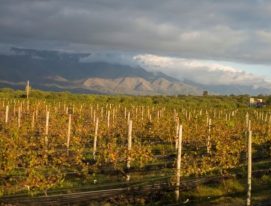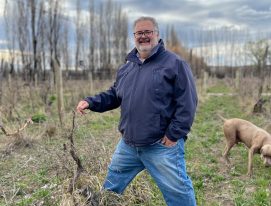The Calingasta Geographic Indication spans the Calingasta Valley between two mountain ridges and includes old vines, a rich culture and unforgettable landscapes. More associated for years with the mining industry, the area has always contained small vineyards planted by the first immigrants to settle there; hundred-year-old vines that witnessed the rise, decline and resurgence of a regional viticultural industry that continues to stoke passions to this day.
The Calingasta Geographic Indication
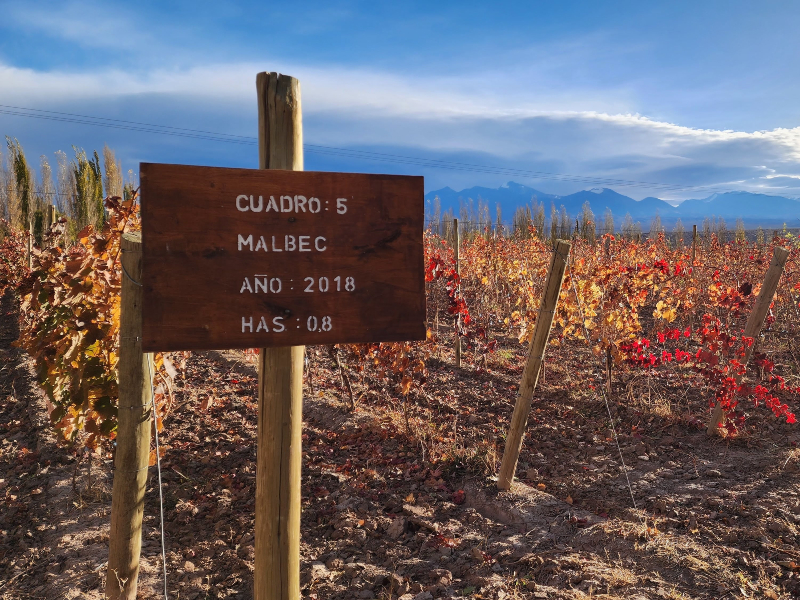
Scattered with timeless mountain settlements such as Hilario, Tamberías and Sorocayense and the Barreal area, the Calingasta Geographic Indication has grown into one of the most attractive emerging viticultural regions in Argentina.
Set between foothills and the Andes proper, the GI is located where three rivers meet to form the River San Juan: the Los Patos, which flows from south to north, the Calingasta, which flows from the west, and the Castaño, which comes down from the north. This ensures sufficient water for crops located at between 4430 and 5600 feet above sea level.
Both Paraje Hilario and the Barreal area, which boast the oldest vineyards, are on the right-hand side of the Los Patos River, while Sorocayense, Tamberías and Calingasta, the areas with newer vineyards, are on the left. One feature to highlight is the reigning philosophy with regard to nature and minimal interventionist methodologies.
“Calingasta has the virtue of bringing to the table a viticultural region with plenty of history, the genetic heritage of old vines and a great future as represented by new vines. It’s an area of high-quality growth with larger and boutique vineyards,” says Andrés Biscaisaque at Finca Los Dragones, one of the most dynamic enterprises in Barreal.
Each of these regions has their own personality: to the south around Barreal, we find wines with tart acidity and greater freshness and texture. To the north are fruitier wines with good concentration thanks to their greater exposure to sunlight.
The climate takes the lead
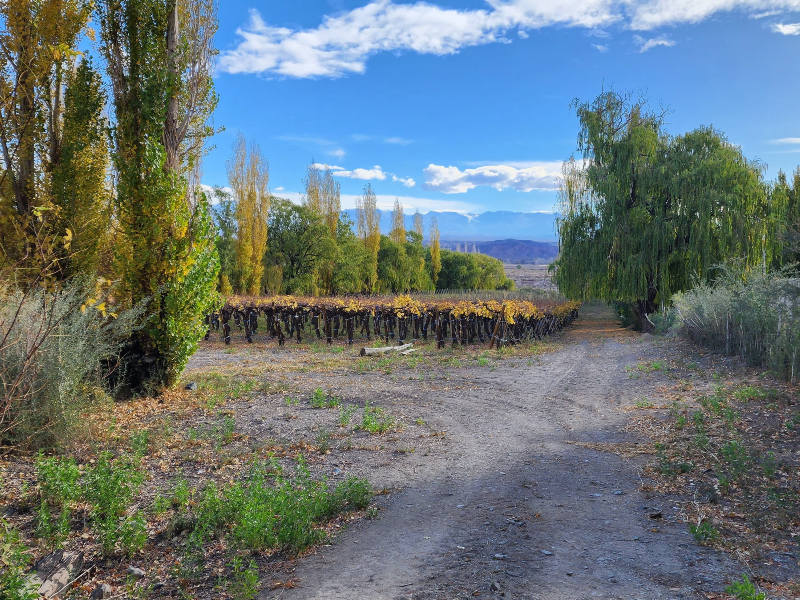
Some climatic conditions apply throughout Calingasta. As a high-altitude valley, the highest region being Barreal at 5600 feet, it isn’t affected by humidity from the east or west. In addition to this, average rainfall is 80mm and it tends to fall in summer, when it is joined by another significant factor: the Zonda wind.
The geophysicist Guillermo Corona believes that the most distinctive characteristic of the Calingasta Valley is its thermal range: “there can be a difference of as much as 24 degrees, a factor that increases the risk of frosts.” During the day, the plants are warmed up by solar exposure and high temperatures and at night they are hit by extreme cold, resulting in wines with a distinctively high valley-character.
The valley is 80 miles long and the fact that it lies between two mountain ranges ensures that the soils within the Calingasta Geographic Indication are quite variable. In general, they’re rich in stone and, as Corona explains, “as in every arid climate, clay isn’t abundant.”
Old and new vineyards

Today, there are about 300 hectares of the valley under vine in the Calingasta Geographic Indication of which about thirty are between 60 and 100 years old. Located mainly in Paraje Hilario, the most prevalent varieties in these pergola vineyards are Torrontés Sanjuanino and Cereza while the treasure that convinced the first modern projects to invest in the valley are the old Criolla Chica and Moscatel Blanco plants. These century-old vines are the standard-bearers for viticulture in the Calingasta Valley.
These varieties are the fruit of an old form of viticulture in which varieties with high yields were planted together to meet demand in the internal market. Following the crisis and fall in consumption per capita, many of these concerns went out of business and although some families have retained their vineyards, most of the hectares in the valley are now planted with another variety: Malbec. However, producers are also exploring varieties such as Cabernet Franc and Garnacha.
The agricultural engineer and founder of Cara Sur, the project that put Calingasta back on the viticultural map, Francisco Bugallo, says: “Fortunately, some owners and families continued producing and it is their heritage vines that are to a degree responsible for what’s going on in Calingasta today.”
Luz María Ossa, who runs the family winery Entre Tapias, a pioneering enterprise that began in 2005, with a vineyard in the Barreal area, thinks that the Calingasta Valley “has enormous potential due to the favorable climatic conditions and the scope for producing wines that express the fruit and character of a unique area.”
The keys to a promising future
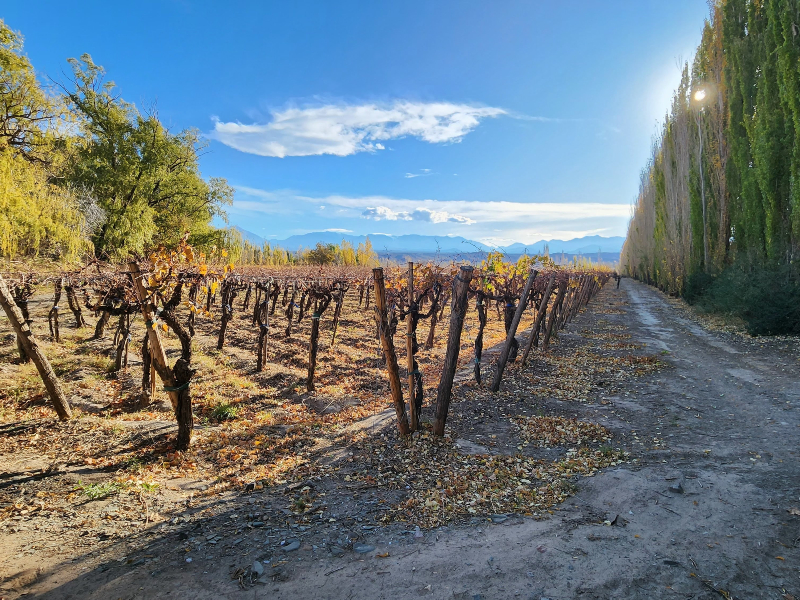
In order for these projects to thrive, they must be sustainable and viable for the long term and this especially true of the Calingasta Geographic Indication.
Although today some wineries are well-established in Argentina and overseas such as Cara Sur, Finca Los Dragones and Bodega del Carmen, diversifying into other areas is also an option.
Bugallo certainly thinks so: “Calingasta needs to become a place where you can enjoy special experiences linked to gastronomy and viticulture.” Cara Sur, the winery he runs in partnership with Sebastián Zuccardi, opens its doors to tourism with a concept closely related by the culture of the valley.
There is no doubt that the Calingasta Valley, with its hundred-year history in viticulture and increasing diversity, enjoys a heritage that should be conserved and protected.


